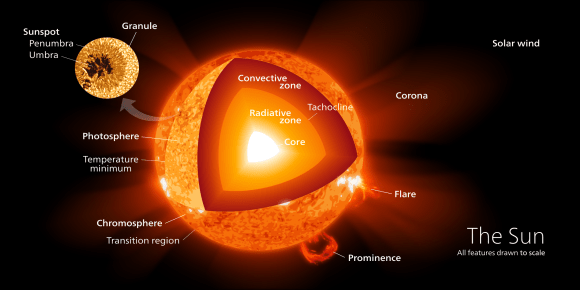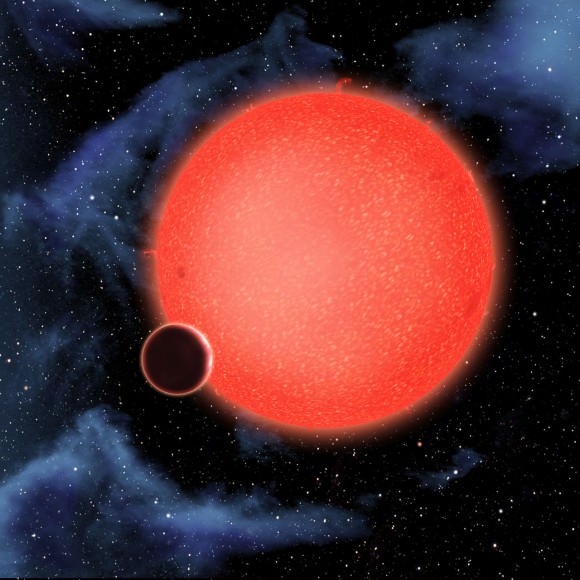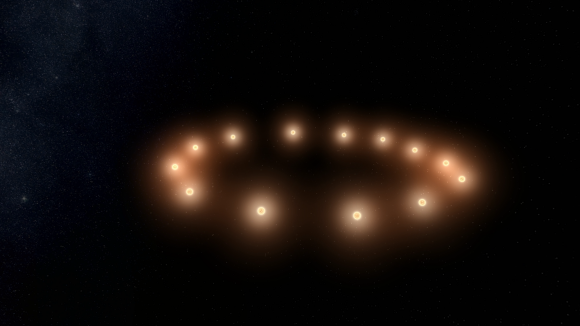Posted on 09/25/2016 6:21:25 PM PDT by LibWhacker
Remember the movie Sunshine, where astronomers learn that the Sun is dying? So a plucky team of astronauts take a nuclear bomb to the Sun, and try to jump-start it with a massive explosion. Yeah, there’s so much wrong in that movie that I don’t know where to start. So I just won’t.
Seriously, a nuclear bomb to cure a dying Sun?
Here’s the thing, the Sun is actually dying. It’s just that it’s going to take about another 5 billion years to run of fuel in its core. And when it does, Cillian Murphy won’t be able to restart it with a big nuke.
But the Sun doesn’t have to die so soon. It’s made of the same hydrogen and helium as the much less massive red dwarf stars. And these stars are expected to last for hundreds of billions and even trillions of years.
Is there anything we can do to save the Sun, or jump-start it when it runs out of fuel in the core?
First, let me explain the problem. The Sun is a main sequence star, and it measures 1.4 million kilometers across. Like ogres and onions, the Sun is made of layers.

The interior structure of the Sun. Credit: Wikipedia Commons/kelvinsong
The innermost layer is the core. That’s the region where the temperature and pressure is so great that atoms of hydrogen are mashed together so tightly they can fuse into helium. This fusion reaction is exothermic, which means that it gives off more energy than it consumes.
The excess energy is released as gamma radiation, which then makes its way through the star and out into space. The radiation pushes outward, and counteracts the inward force of gravity pulling it together. This balance creates the Sun we know and love.
Outside the core, temperatures and pressures drop to the point that fusion can no longer happen. This next region is known as the radiative zone. It’s plenty hot, and the photons of gamma radiation generated in the core of the Sun need to bounce randomly from atom to atom, maybe for hundreds of thousands of years to finally escape. But it’s not hot enough for fusion to happen.
Outside the radiative zone is the convective zone. This is where the material in the Sun is finally cool enough that it can move around like a lava lamp. Hot blobs of plasma pick up enormous heat from the radiative zone, float up to the surface of the Sun, release their heat and then sink down again.
The only fuel the Sun can use for fusion is in the core, which accounts for only 0.8% of the Sun’s volume and 34% of its mass. When it uses up that hydrogen in the core, it’ll blow off its outer layers into space and then shrink down into a white dwarf.
The radiative zone acts like a wall, preventing the mixing convective zone from reaching the solar core.
If the Sun was all convective zone, then this wouldn’t be a problem, it would be able to go on mixing its fuel, using up all its hydrogen instead of this smaller fraction. If the Sun was more like a red dwarf, it could last much longer.

Red dwarf stars burn for much longer than our Sun. Credit: NASA, ESA, and D. Aguilar (Harvard-Smithsonian Center for Astrophysics)
In order to save the Sun, to help it last longer than the 5 billion years it has remaining, we would need some way to stir up the Sun with a gigantic mixing spoon. To get that unburned hydrogen from the radiative and convective zones down into the core.
One idea is that you could crash another star into the Sun. This would deliver fresh fuel, and mix up the Sun’s hydrogen a bit. But it would be a one time thing. You’d need to deliver a steady stream of stars to keep mixing it up. And after a while you would accumulate enough mass to create a supernova. That would be bad.
But another option would be to strip material off the Sun and create red dwarfs. Stars with less than 35% the mass of the Sun are fully convective. Which means that they don’t have a radiative zone. They fully mix all their hydrogen fuel into the core, and can last much longer.
Imagine a future civilization tearing the Sun into 3 separate stars, each of which could then last for hundreds of billions of years, putting out only 1.5% the energy of the Sun. Huddle up for warmth.
But if you want to take this to the extreme, tear the Sun into 13 separate red dwarf stars with only 7.5% the mass of the Sun. These will only put out .015% the light of the Sun, but they’ll sip away at their hydrogen for more than 10 trillion years.

Stick the Earth in the middle and you’d have some very odd sunrises and sunsets, not to mention orbital dynamics. Created with Universe Sandbox ²
But how can you get that hydrogen off the Sun? Lasers, of course. Using a concept known as stellar lifting, you could direct a powerful solar powered laser at a spot on the Sun’s surface. This would heat up the region, and generate a powerful solar wind. The Sun would be blasting its own material into space. Then you could use magnetic fields or gravity to direct the outflows and collect them into other stars. It boggles our imagination, but it would be a routine task for Type III Civilization engineers on star dismantling duty.
So don’t panic that our Sun only has a few billion years of life left. We’ve got options. Mind bendingly complicated, solar system dismantling options. But still… options.
I tend to agree
The Sun: the final frontier.
Tax the Sun as women and minority’s mostly effected
Maybe it’s on a highly elliptical orbit within the star itself having been captured at some point? That way it would spend only part of the time near the core and the rest farther out where it’s effect is less.
If that were the case, though, the star’s fate is a matter of if the black hole will dissipate faster than it is absorbing matter. If it dissipates, being too small, the star benefits from the relationship because of what stirring of its mass has occurred. If not then the star is ultimately doomed by the parasite now within it.
The test of such a theory might then be if, over time, the dimming effect increased (star doomed) or diminished (star benefits) as neither would seem a likely outcome of an orbiting cloud of stuff.
There is some indication that Tabby’s has been dimming at the rate of 0.16 magnitude per century (http://www.skyandtelescope.com/astronomy-news/tabbys-star-weird-star-gets-weirder/).
The discovery of another star similar to Tabby’s so soon after Tabby’s was found may indicate they’ve found another class of stars, in this case, stars with small black holes in them, stirring up the pot and opening a new window on stellar cores that could keep astronomers and physicists busy for some time.
I love the possibilities: primordials on long elliptical orbits, dissipating while outside the star, perhaps fully replenishing themselves when they dive back into it, binary primordials whose link to one another is broken by the star, all happening in every class of star at every stage of evolution, etc.
(Love your tagline!)
Disclaimer: Opinions posted on Free Republic are those of the individual posters and do not necessarily represent the opinion of Free Republic or its management. All materials posted herein are protected by copyright law and the exemption for fair use of copyrighted works.